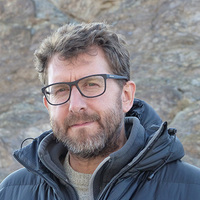
Jen Harland
Related Authors
James H Barrett
Norwegian University of Science and Technology
Bart Holterman
Deutsches Schiffahrtsmuseum
Philipp Grassel
Deutsches Schiffahrtsmuseum
Jack Bouchard
Rutgers, The State University of New Jersey
Mark Gardiner
University of Lincoln
Natascha Mehler
Eberhard Karls Universität Tübingen
Silke Reeploeg
University of Greenland
Thomas Brochard
University of St Andrews
Kathrin Zickermann
University of the Highlands and Islands - UHI
InterestsView All (57)










Uploads
Books by Jen Harland
The LIFTE project is concerned with what is nowadays still a remote region on the fringes of Europe: the British Orkney and Shetland Islands. Despite (or perhaps because of) their location on the edge of Europe, these British Northern Isles today attract thousands of tourists each year and constitute anchor points for the oil and offshore industries in the North Sea. But they have been the destination of Hanseatic merchants, English and Scottish traders and herring fishers from Holland in the Middle Ages and the early modern period.
Papers by Jen Harland
Measurement comparisons of ancient and modern carp push back the initial stages of aquaculture to 6000 BC, raising the possibility that rice paddy and fish co-culture systems are much older than previously thought. This research suggests carp were later independently domesticated twice, once in Europe and once in Asia.
the International Council for Archaeozoology - Fish Remains Working Group (ICAZ-FRWG), hosted by the
Directorate-General for Cultural Heritage - Archaeosciences Laboratory (DGPC - LARC) and the Research
Centre in Biodiversity and Genetic Resources – Environmental Archaeology Research Group (CIBIO -
EnvArch).
The meeting is aimed primarily for archaeozoologists interested in the systematic study of fish bones
retrieved from archaeological sites around the world, and also to archaeologists, ichthyologists, historians,
ethnographers, and fishery biologists. To this end the conference is structured to encompass a multiplicity
of approaches to the study of fish remains and their contribution to our understanding of how fishing, fish
trade, fish consumption, biodiversity, ecology and human impact on aquatic environments have changed
through time.
The LIFTE project is concerned with what is nowadays still a remote region on the fringes of Europe: the British Orkney and Shetland Islands. Despite (or perhaps because of) their location on the edge of Europe, these British Northern Isles today attract thousands of tourists each year and constitute anchor points for the oil and offshore industries in the North Sea. But they have been the destination of Hanseatic merchants, English and Scottish traders and herring fishers from Holland in the Middle Ages and the early modern period.
Measurement comparisons of ancient and modern carp push back the initial stages of aquaculture to 6000 BC, raising the possibility that rice paddy and fish co-culture systems are much older than previously thought. This research suggests carp were later independently domesticated twice, once in Europe and once in Asia.
the International Council for Archaeozoology - Fish Remains Working Group (ICAZ-FRWG), hosted by the
Directorate-General for Cultural Heritage - Archaeosciences Laboratory (DGPC - LARC) and the Research
Centre in Biodiversity and Genetic Resources – Environmental Archaeology Research Group (CIBIO -
EnvArch).
The meeting is aimed primarily for archaeozoologists interested in the systematic study of fish bones
retrieved from archaeological sites around the world, and also to archaeologists, ichthyologists, historians,
ethnographers, and fishery biologists. To this end the conference is structured to encompass a multiplicity
of approaches to the study of fish remains and their contribution to our understanding of how fishing, fish
trade, fish consumption, biodiversity, ecology and human impact on aquatic environments have changed
through time.